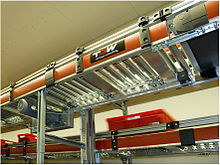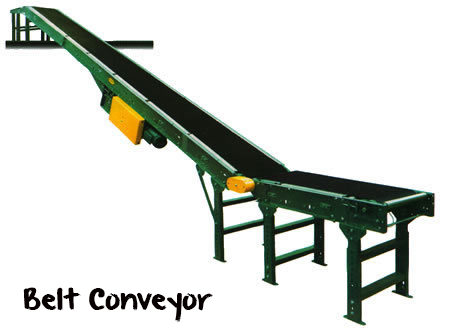A Biased View of Plant Conveyors And Systems
Table of ContentsThe smart Trick of Plant Conveyors And Systems That Nobody is Talking AboutThe smart Trick of Plant Conveyors And Systems That Nobody is DiscussingWhat Does Plant Conveyors And Systems Mean?More About Plant Conveyors And SystemsThe Single Strategy To Use For Plant Conveyors And Systems
Here are 20 usual kinds of conveyors. This is possibly what you visualize when you think of a conveyor.It is built at a mild decline so components slide downward by themselves. This is like a gravity roller conveyor except a chain or belt is used to make the rollers activate their own, so they do not need to be improved a decline. Often they can also rise.
Bucket conveyor systems are made use of to move product vertically, by scooping it with a collection of pails connected to a belt, chain, or wire. The conveyor relocates the pails upwards, scooping up the product, and also carrying it to the top before discarding it out. describes this kind of conveyor system: "Ball Transfer tables or conveyors make use of a collection of placed ball wheels to permit unpowered, multi-directional conveyance of the item." Basically, think of rows of steel rounds on a table that can turn as well as revolve in any kind of instructions.
Plant Conveyors And Systems for Beginners
As Ultimation discusses, "A slat conveyor is basically a two-strand chain conveyor with slats attached to the chain as well as a leading system for the slats. This creates a smooth surface to which tooling information or fixtures can be installed to hold components in the wanted position." Below is a video of one working. Instead of having rollers or a belt, they have relocating chains to carry items. There is a whole family of conveyors that lug their load beneath them instead of on top of them.
Occasionally, as with the Power-and-Free Conveyor, they have 2 tracksone mechanized and one not mechanized. Transform a trolley conveyor upside down, attach it to the flooring instead of the ceiling, and you have actually got an upside down monorail. This conveyor shakes slightly to move bulk product along it.

The Only Guide for Plant Conveyors And Systems
There are likewise various other associated gadgets that make use of a chain to drag things such click over here now as a tubular drag conveyor. As NC State College explains, "Sortation conveyors are utilized for combining, recognizing, inducting, and separating items to be shared to certain locations." They make use of various approaches to sort incoming packages. These conveyors utilize a vacuum or air try this website pressure to move material.
They raise them approximately a different degree of the storage facility. They are not big enough to lift individuals. These resemble a roller conveyor except with little, specific wheels as opposed to long, round rollers. Strolling Light beam conveyors move product incrementally along the conveyor utilizing moving as well as fixed supports.
If you require help picking a conveyor system, let us recognize. We have over 35 years of experience dealing with jobs large (as much as $30 million) as well as little.
Not known Details About Plant Conveyors And Systems
Intro The complete overview to conveyor systems on the web. Conveyor System Needs Kinds of Conveyor Systems Exactly How Does a Conveyor System Job?

Lots Capacity: Once the system has been outlined and also offered a pattern, it needs to be identified what will be the amount of products it can bring - Plant Conveyors and Systems. Overloading a system can damage it or cause it to drop in the middle of its procedure. Variables that affect the lots capacity are general size see this website as well as bed size along with the drive system.
Getting The Plant Conveyors And Systems To Work

Motion of powdered, granular, and chip kind materials can have dust build up, which is considered in system layout and may require some form of purification. Similar to various other communicating systems, a cautious examination of the qualities of the product is needed. Setup: Communicating systems come in a variety of shapes, styles, dimensions, as well as kinds.
Considering that each system is designed to fit an unique application, it would certainly be difficult to cover all of the different configurations. What is very important to comprehend is that there are very few limitations on adding a conveying system, despite the application. Drive System: The drive of an automated conveying system is the power that moves products.